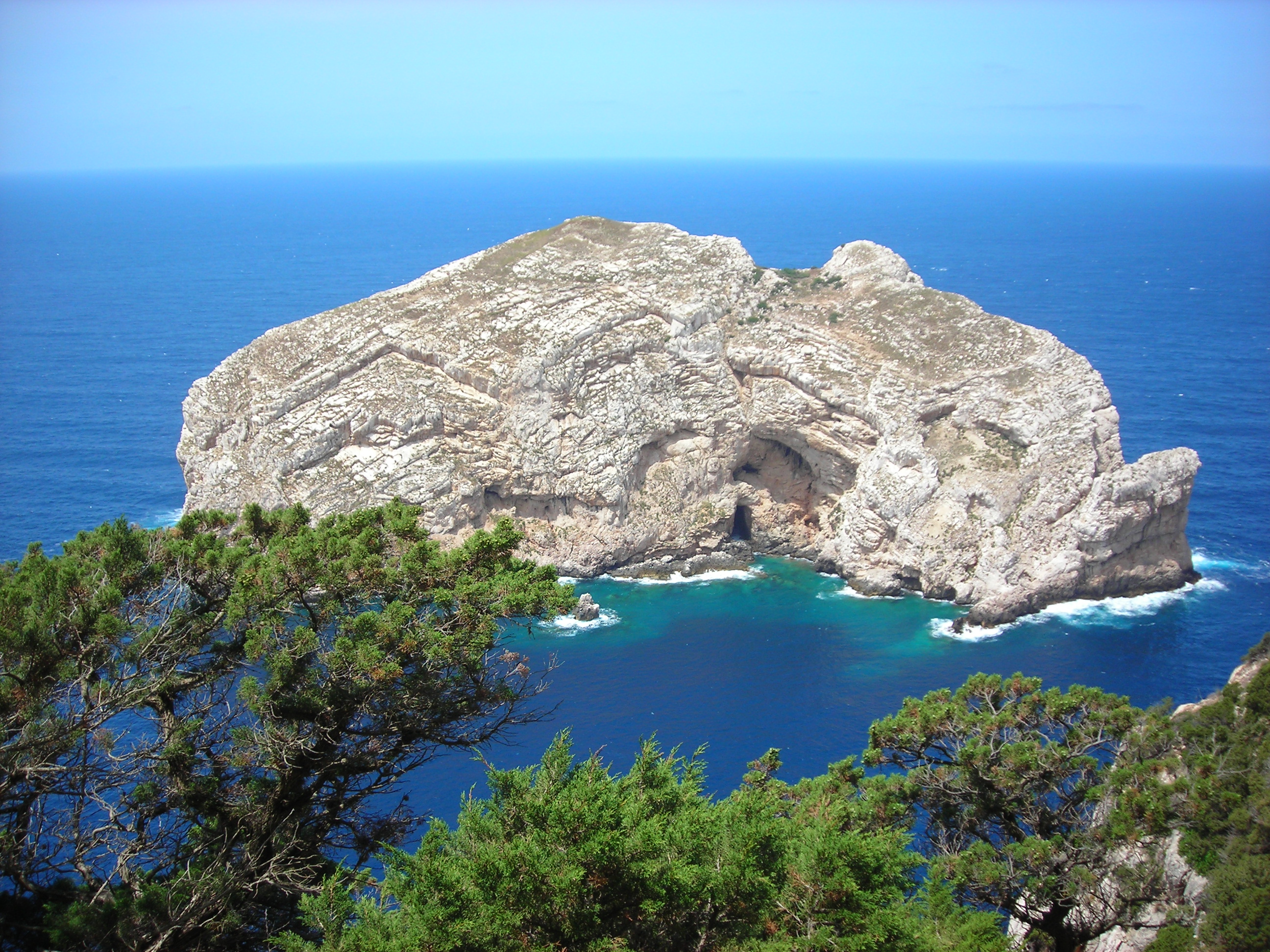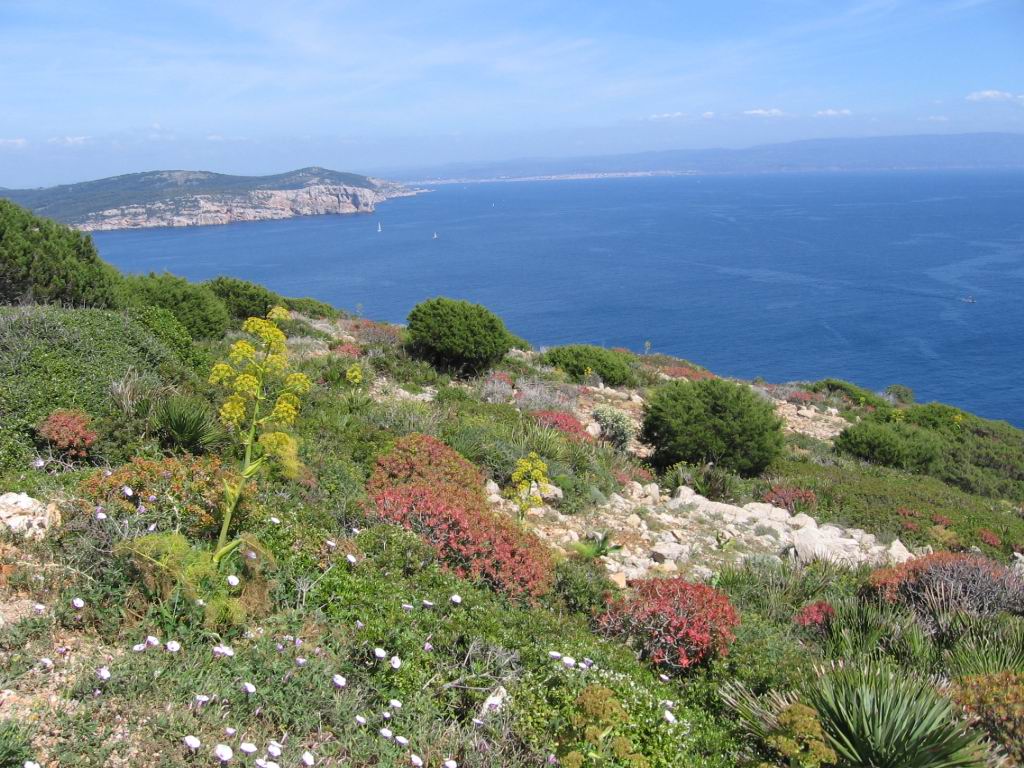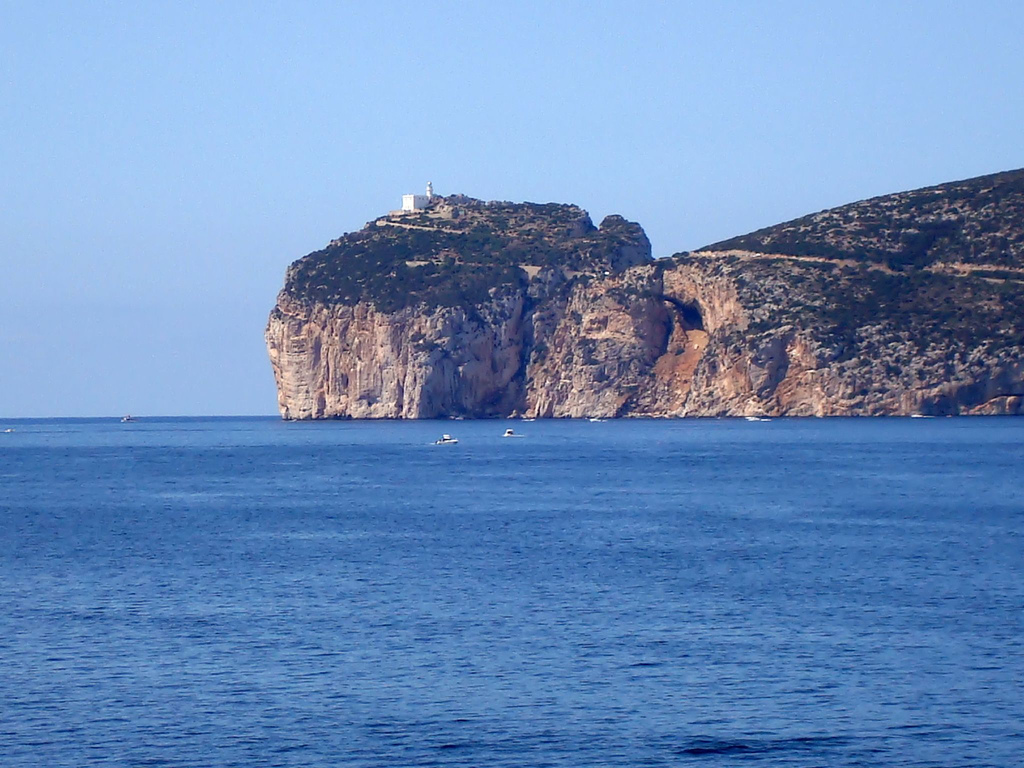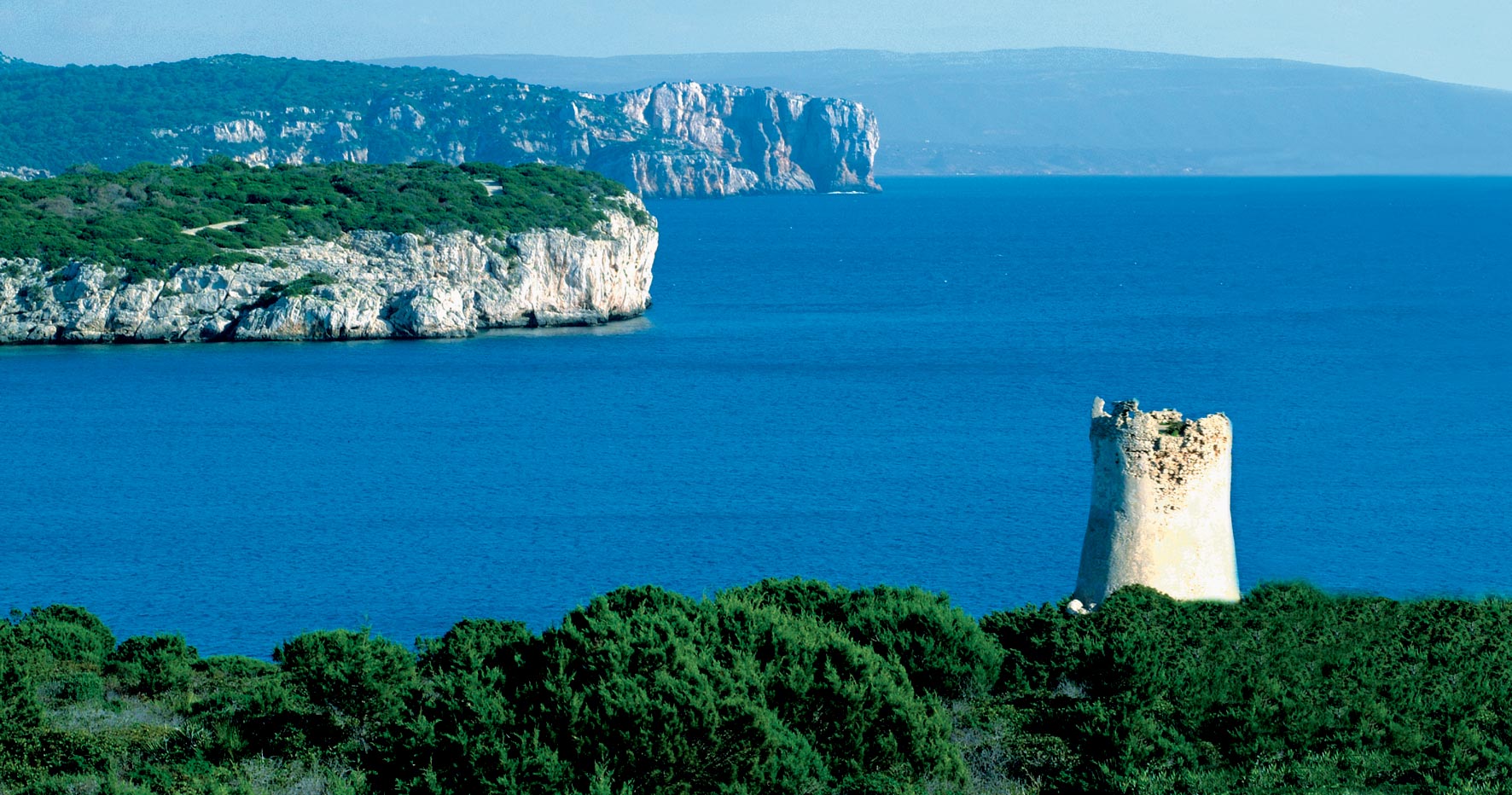
Capo Caccia Marine Protected Area
This post is also available in:
 Italiano (Italian)
Italiano (Italian)
Capo Caccia is an imposing spur of calcareous rock, in the north-western end of Sardinia; from its summit, the wide Gulf of Alghero and the nearby island of Foradada are clearly visible. It is 552-ft high and rises toward the south, sealing the deep inlet of Porto Conte to the west.
The name of this place (“Caccia” – which means “Hunt” in Italian) comes from the XIX century hunting sprees extremely popular among the local nobles, who used to shoot the local pigeons from their boats.
Capo Caccia is now a permanent wildlife oasis, created to protect the whole marine area. It is mostly renowned for several sea caves in the lower part of the promontory. For instance, there’s Grotta di Nettuno (“Neptune’s Cave”), featuring majestic stalagmites and stalactites – one of the most evocative caves, reachable by sea (from Alghero or Cala Dragunara), or on foot from the top of the promontory, descending a long panoramic staircase. Underwater, on the other hand, there’s the famous Grotta di Nereo (“Nereo’s Cave”), considered the largest submerged cave in the entire Mediterranean.
FLORA AND FAUNA
Capo Caccia area is not only a wildlife protection facility for griffons, but also for Sardinian partridges, Bonelli’s eagles, peregrine falcons, yellow-legged and Audouin’ gulls, Scopoli’s and Manx shearwaters, European shags, the rare Eleonora’s falcons, as well as many other splendid seabirds that usually nest here. The local fauna also includes some specimens of Giara horses.
Rich in endemic species and rare plants, this environment also features the European fan palm (Chamaerops humilis), a true example of tropical flora at Mediterranean latitudes; the seabed is full of the precious Corallium rubrum, a red coral that is strongly embedded within the local culture and traditions.
In front of the cliffs of Capo Caccia, there’s Foradada island, a fragment of coast that can only be reached by sea. On this rock separated from the mainland, grows a very rare endemic species: Brassica insulare, a plant that grows exclusively on this island.
This post is also available in:
 Italiano (Italian)
Italiano (Italian)
Contatti
SP 55 - Km 8.000 c/o Porto Conte Ricerche - Alghero(SS)
079 998551
info@ampcapocaccia.it




